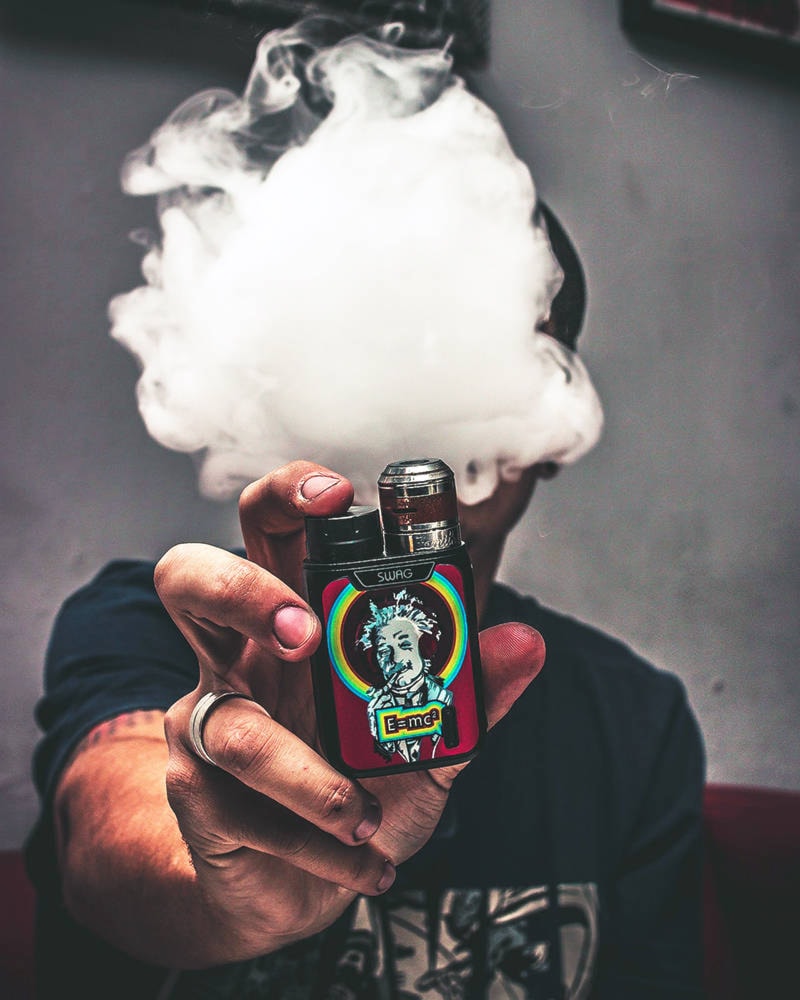Northern Health medical health officer Dr. Jong Kim says the B.C. government implementing tighter controls on the vaping industry will go some way in slowing the rapid growth of vaping in the province.
“From our point of view this is very encouraging. Over the last three years we have seen a dramatic rise in the numbers of people starting to vape. Clearly, the work Northern Health is doing is just not enough,” said Kim.
He said the increase in vaping among young people is especially worrying, a trend he attributes to a “cultural sensation” that has emerged around vaping. Teenagers who ordinarily wouldn’t have considered smoking tobacco products take up vaping, its popularity growing as a result of the myriad of flavours and attractive packaging of vaping liquid.
Kim said, however, that the nicotine component in vaping products is creating addictions among the youth, which increases the risk of someone starting to smoke tobacco products.
Curtailing the increase requires government implementing legislation that ensures the price of the product increases, access to it decreases and awareness of the dangers of vapid increases.
“The legislation contains strong components that when implemented should make a difference. Northern Health will focus on implementing and monitoring these actions.”
He stressed that while vaping is less harmful than smoking, it’s not harmless.
“Non-smokers should not start vaping, and smokers should talk to healthcare providers and make use of the different resources available if they want to stop smoking, not switch to vaping,” said Kim.
In an announcement on Thursday, November 14, provincial health minister Adrian Dix said as of 2020 vaping products sold in B.C. stores will have limits on the amount of nicotine they contain and be subject to a 20 per cent tax. Restrictions on where candy- and fruit-flavoured vaping are sold will also be implemented.
Dix said the move was sparked by a 74 per cent spike in vaping among high school-aged youth between 2017 and 2018, even though it’s illegal to sell vaping products in B.C. to anyone under the age of 19.
“If you have not been vaping, vaping is not a good idea,” Dix said on Thursday.
Nicotine levels for vaping products sold in B.C. will be restricted to 20 milligrams per millimetre, citing the example of the U.K. which has the same restrictions and much lower levels of youth vaping.
Dr. Khairun Jivani, the director of cancer control for the B.C. and Yukon branch of the Canadian Cancer Society, said studies show that one in five youth has vaped in the past 30 days.
There are currently eight probable and confirmed cases of vaping-related illness in Canada, which includes three probable cases in B.C., the most of any province.
Dix said the province will declare nicotine a public health hazard which will allow the B.C. government to regulate the amount of nicotine in vaping products sold in B.C.
Jivani said the change is important because nicotine is highly addictive.
“Nicotine devices have high levels of nicotine, as much as a pack of cigarettes,” she said.
Jivani also cited chemicals in vaping products, which while approved for use in the production of food, have not been studied when they are vapourized in e-cigarettes.
Youth who use vaping products also have a higher rate of moving onto tobacco, Jivani noted.
Finance Minister Carole James said the 20 per cent tax on vaping products would be the first such tax in Canada. If passed, the 13 per cent increase in the provincial sales tax for vaping products will come into effect on January 1, 2020.
If passed, the measure is expected to bring in $2.5 million this fiscal year, and $10 million in the 2020-2021 year. The tax on tobacco products generates about $25 million per fiscal year.
Dix said that the restrictions on fruit and candy flavoured will cut down the number of stores in B.C. where non-tobacco flavoured products can be sold from 90,000 potential locations to somewhere in the hundreds. Some vaping flavours will be fully banned, Dix said, but declined to elaborate on which those would be.
None of these rules will apply to vaping products sold online, as that is regulated federally. Dix said the province was hoping the feds would bring in similar regulations nationwide as B.C. has here.
What is vaping?
The federal health ministry defines vaping as “the act of inhaling and exhaling an aerosol produced by a vaping product, such as an electronic cigarette.”
While vaping doesn’t require burning like cigarette smoking, the device does use heat to turn a liquid into vapour, which in turn becomes an aerosol. This vapour is often flavoured and can contain nicotine.
Vaping devices consist of a battery, mouthpiece, heating element and a chamber (a reservoir containing a liquid solution).
There are two kinds of vaping devices – open, which means they can be refilled, and closed, which means either the whole product, or the part that holds the vaping substances, can’t be refilled.
In vaping liquids, nicotine and/or flavouring compounds are dissolved in a liquid mixture. This mixture is typically propylene glycol and/or glycerol (vegetable glycerin).
In the vaping substances that contain nicotine, the level of nicotine can vary widely. While some mixtures have very low levels of nicotine, others have more nicotine than in a typical tobacco cigarette.
Flavouring compounds consist of chemicals and blends of chemicals used to make different flavours. Ingredients typically found in vaping liquids are also found in the aerosol, including glycerol and propylene glycol, which is typically used by the chemical, food and pharmaceutical industries as an antifreeze when leakage might lead to contact with food.
